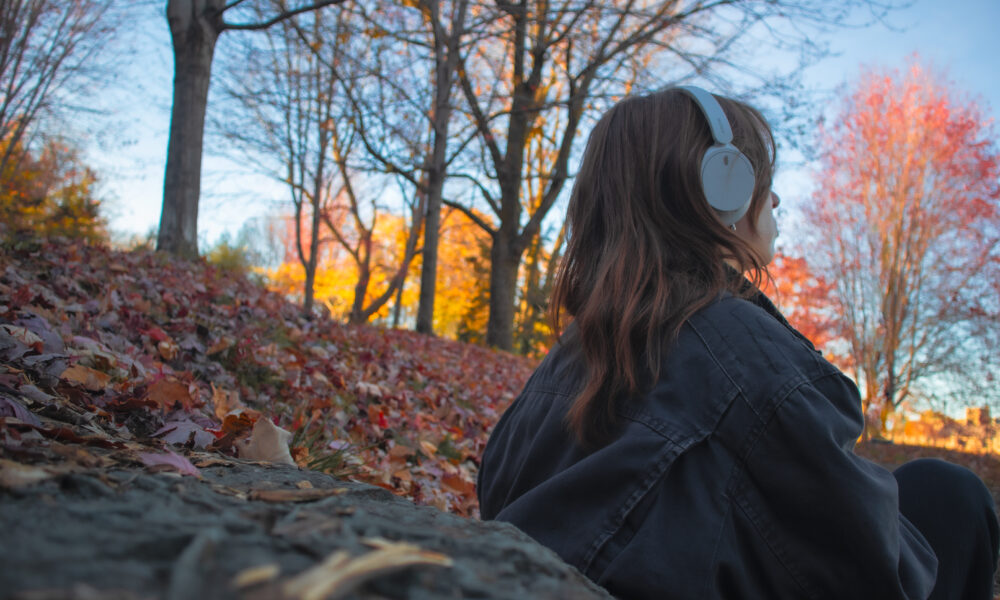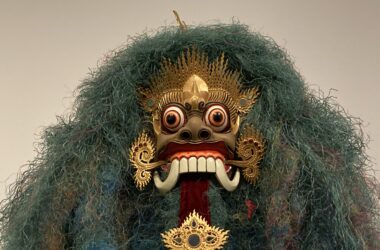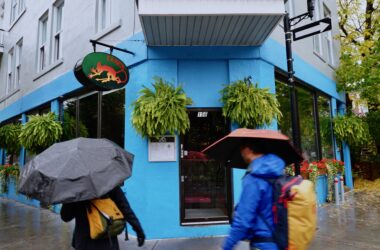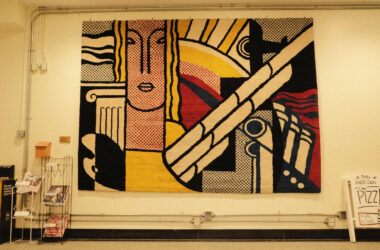This fall, the PHI Centre is hosting Habitat Sonore: A Kind of Harmony, a series of six sound exhibitions created by different artists. Each event comprises an in-depth interview with the artist, followed by a collective listening experience for the sound piece. Most recently, the centre welcomed audiences on Oct. 26 and 27 for AM Kanngieser’s exhibition ‘Listening as Coming To.’ Kanngieser, an award-winning geographer and sound artist, brings his talent to the PHI Centre to shed light on environmental justice through sound art.
Pioneered by futurist Luigi Russolo, sound art is an immersive art form that utilizes auditory mechanisms for creative expression through atmosphere. Kanngieser’s exhibition cultivates sounds in a way that illustrates a deeper form of recognition and understanding of the land and all that came before him: For ‘Listening as Coming To,” Kanngieser worked with the sounds of Nauru, a small island in Micronesia, to pay respect to the island’s Indigenous population.
The exhibition began with a conversation with the artist dissecting the concept of listening itself. Kanngieser and the interviewer discussed how, as humans, we come to conversations and environments with our own personal baggage that influences how we perceive and interpret sound. Thus, by bringing our own presence to every experience, we change the environment itself.
Additionally, Kanngieser spoke to how certain cultures build relationships with sound patterns and utilize similar motifs of audio over the course of time. This cultural side of sound is based mostly on the environment, the history of a place, and the people that came there before. Recognizing and respecting that facet of the listening process is a crucial part of building a relationship with the listening environment and ensuring that the audience fully sees the space for all that it is.
“You have to establish a relation, you know, you can’t just go in and take things. You can’t just extract all the time again and again,” Kanngieser stated.
He accompanied that statement by asserting that one’s presence must appreciate the totality of the environment when recording sounds for their art. Kanngeiser touched on building a relationship with a space, elaborating on how people can choose the conditions in which they care for a space and take into account its liberation amidst environmental change. With appreciation for the space came greater respect and understanding of what he created.
One of the final things discussed in the interview was the power of silence and its complexities. Kanngieser explained that while most people view silence as a lack and sense of emptiness, he approaches it differently.
“Silence is more of an overflowing of, an overabundance [of], all of these things that exist in a way that maybe can’t be said, that sit at the limits of language,” Kanngieser clarified.
The interview concluded with Kanngieser establishing silence as an invitation to the audience to pause and listen, thereby reorienting themselves to the plethora of sonic relations occurring at that moment. Kanngieser’s 15-minute piece followed.
The piece commenced with tranquil nature sounds that simulated a rainforest and what I perceived to be a river. With serene water sounds flowing all around the room, I felt as though I myself was in the rainforest. The dim lighting of the exhibition room, paired with the cozy cushions provided for audience members to lie on, created an idyllic ambience for sinking into the auditory experience. The piece continued with a series of sparkling sounds, celestial and otherworldly, until eventually fading out to silence.
Throughout the experience, I felt transported from place to place and was moved to such a state of peace that I felt myself slowly being lulled to sleep. The piece was transportive and sensational, evoking feelings and sensations of serenity strictly from listening and bathing in the surrounding sounds.
Kanngieser built this ambience by using recordings from Nauru to reveal the natural life of the island. By displaying the beauty of Nauru, Kanngieser hopes to spread awareness and spark discussions of environmental justice for the land in other creative spaces.







